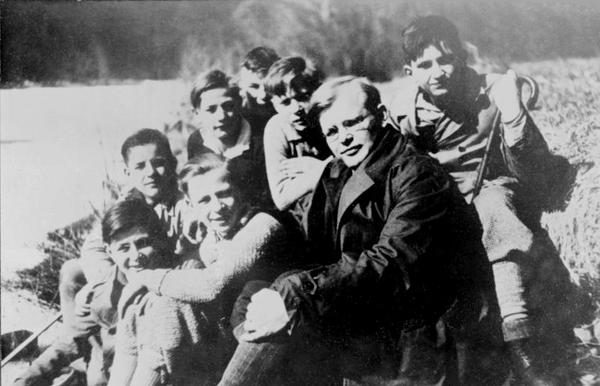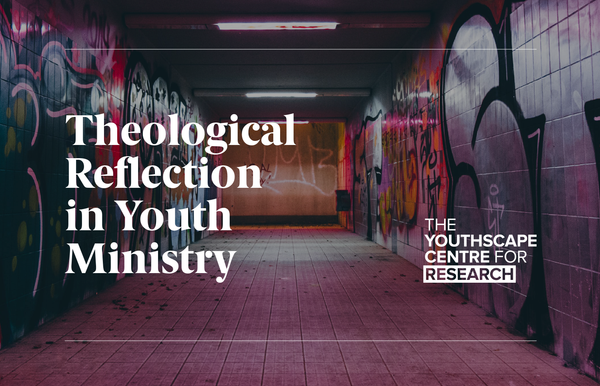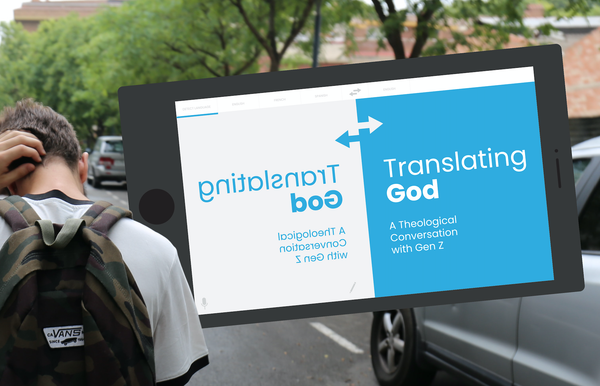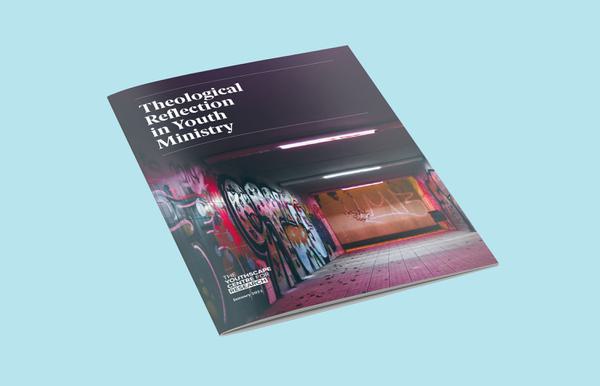Mark Scanlan is Tutor in Theology and Youth Ministry and Lead Undergraduate Tutor at St Mellitus College. He sat down with Director of Research Lucie Shuker to talk about his book ‘An Interweaving Ecclesiology’.
LUCIE: “Hi Mark, thanks for dropping by to tell me about your book! I know it’s based on research you did for your PhD, after 20 years of experience in youth ministry. What was it about your time as a youth worker that prompted questions you wanted to answer with a doctorate?”
MARK: “Hi, yes – my adult life has been spent working with young people in local churches, and I've just always been really intrigued by the question of the church and youth ministry. Our work with young people seemed to operate in a slightly undefined kind of place. It was part of the church, but it also sort of wasn't the church.
For example, we were fortunate enough at the time to have a dedicated youth centre that we operated out of, but the church building where the Sunday morning services met and where the church staff team office was, was always referred to as the ‘main church’. And it used to, kind of, get to me – well, why is that the main church? It immediately downgrades what we do with young people. One time, a young person became a Christian through coming to our youth service, on a Sunday night and wanted to get baptised at that service. But we had always done our baptisms of young people on Sunday mornings when the whole adult congregation could celebrate with them.
So, we ended up with a sort of halfway house, of a Sunday evening service to baptise this young person but held in the church auditorium and inviting the whole church family to come. And it was a wonderful service. But it was also really frustrating for me, because there were fewer young people who came along than we would often get to the youth service, and fewer of the wider church family came along than would have been there celebrating if we'd held it in the morning.
So around that time lots of questions bubbled to the surface. What is or isn't church? When we're doing stuff with young people in a different location, does that count? If I'm really honest, my motivation was to create a theological response that would allow us to be able to say – these groups we run for young people, they arechurch. And, actually, as I did the research, that came up, but it wasn’t really the answer. It was much more complex, it was much more ambiguous, and I think much more sort of beautiful as a response and much more helpful.”
LUCIE: “That’s so often the case. We start with a question, a gut feeling, a desire, on any research journey. And that is often transformed on the way. Can you say a little bit more about what you found, and why it was different to what you expected?”
MARK: “Yeah, so I developed this phrase that is key to my argument in the book, and describes what I found, which is that Christian youth groups are potential ecclesial spaces.”
LUCIE: “Ecclesial meaning…?”
MARK: “From the Greek word ecclesia, which basically means the ‘called out’ community. So, it's the word that in the New Testament, we most often translate as church. I argue that the relationships built within youth groups create a space with the potential to be a place of deep and rich Christian community. The groups I observed were places of ecclesial practice where faith was explored, where faith was sparked and cultivated, and where a deep kind of community was built. But at the same time, some groups sort of resisted the identity of being church. They wanted these groups to just be a safe place to hang out, and to be filled with the regular life of youth groups, games and food and crafts all that kind of stuff. Because the identity of the group was ambiguous and malleable young people were able to appropriate the group to, almost, to ‘meet them where they're at’ as we often say.
And so I ended up trying to capture something of that ambiguity, with this phrase, ‘potential ecclesial spaces’, that the youth groups had the potential of ecclesial life, but resist the fullness of that identity. For some young people, the group is part of their expression of the church, whereas for others, they're ‘just’ youth groups they go along to.”
LUCIE: “I think that as adults, when we value this sort of work with young people we seem to want to pin it down. We've got to assert, theologically, that this is church. Maybe so that the rest of the adults will let us do this, to keep paying our salary perhaps! But what I hear you saying is that it’s the ambiguity that actually makes the invitation to faith possible?
MARK: Yeah, I think I think you're absolutely right, because the ambiguity of that space removes some of the pressure and expectation – on leaders and on young people! And it creates space for things that we don't often create space for in the activities that we formally name as church. One of the things that fascinated me in the case studies was that the ambiguity of that space meant that practices that are normal in youth groups were able to interrupt the things that would take place in a church service.
So in one case, a youth worker said that in their youth group, the most important thing to them was the Bible study, and that took precedent over anything else. But when I was observing, a young person arrived at the Bible study 15 minutes late and the leaders stopped the Bible study and turned to welcome the young person. They didn’t usher them in quietly to come and sit down, as would happen with adults, but spent time chatting and finding out about their week. It was really fascinating, because actually the practice of hospitality and welcome interrupted the Bible study.
"There’s an inherent need for humility about how we talk about the church...each expression of the life of the church is never going to be a full expression of the church...we always have something to learn from each other."
One of the key things to remember about all this is the church is always both institution and movement. There are the instituted traditions of the church, those core things handed down, you know, the sacramental life of the church, Eucharist and baptism etc. But the church is also called to be pilgrim – not static – but moving. We often miss the sense of movement, which is where the church, I would argue, follows the work of the Spirit into new spaces, and wrestles with new questions and interacts with people in new ways and, and allows for exploration of faith. So, the gift of the youth ministry tradition back to the wider church is the reminder that the church is always to be moving into new spaces, and that’s particularly pertinent in the world of young people. Andy Root talks about young people, not as those who inhabit alien cultures, but as interpreters of the culture all around us. So if young people are in that hermeneutical location, as cultural interpreters, then it invites the church to wrestle with new questions and new kinds of thoughts and patterns of life, that sees the life of the church expand.”
LUCIE: “What do you think all this means for us adults in the church?”
MARK: “In terms of attitude, I think there’s an inherent need for humility about how we talk about the church. It calls us to be, sort of open handed, and is a reminder that each expression of the life of the church is never going to be a full expression of the church. And I think what that means in terms of practice most clearly, is the importance of dialogue, of conversation, of listening, and recognising that there is we always have something to learn from each other.
Often it can, it can be a fairly one directional relationship, that youth workers and volunteers or employed youth ministers or youth pastors can feel under pressure, to bring young people ‘into’ the church. And what we mean by that is ‘into the Sunday service’. And we need to question how helpful that is as an underlying or implicit goal. Because it might just be that what the church needs to do is also move nearer to listen to the young people on the margins, in the youth groups. We want to see these young people here, but actually we need to recognise that the life of the church is expressed in a multitude of ways, in this interweaving of different activities and relationships and expressions that are both in the institution and the movement, in the centre and on the on the edges.”
LUCIE: “That’s really helpful, thank you. Institution and movement, centre and edge. There are lots of lovely tensions in youth work, and your work reminds us that they’re not problems to solve, but create loads of possibility!”
To find out more about Mark’s book and get yourself a copy head to SCM Press












